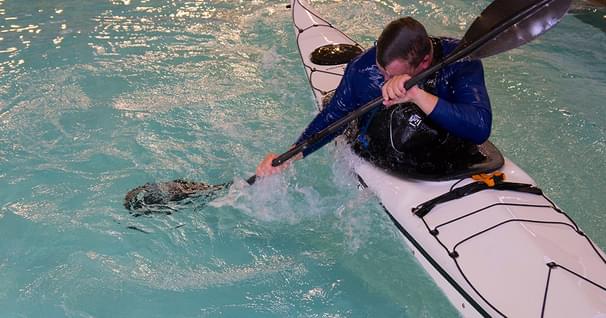Canoe Back Strokes
When paddling solo you can move backward in a straight line by using a combination of back strokes and cross back strokes, just like you can use a forward stroke and cross forward strokes.
Cross Back Stroke
The wind up for the cross back stroke involves rotating your torso aggressively to your off side and swinging your shaft hand across the canoe so that you can plant the blade deeply in the water beside or behind your off side hip with the shaft as vertical as possible. The power phase now relies exclusively on torso rotation as you unwind your body and pull the blade forward to your knee. To end the stroke twist your control hand so that your thumb points towards the bow and then slice the blade out of the water.
Reverse J Stroke
The Reverse J Stroke can be used by either the bow paddler of a tandem or by a solo paddler to move backwards in a straight line and uses a regular backward stroke with a little pry at the end. The pry starts at the end of the power phase of your back stroke when your paddle is extended towards the bow. To do this you'll turn your control hand thumb down which will turn the back face of the paddle away from the canoe. You can now pry with this blade by pulling your control hand inward over the canoe.
Related Articles
By changing how you edge and balance your boat you can increase your stability and adaptability. Using…
Whether you were new to paddling in 2018 or you're an experienced paddler, you can never stop learning.…
Mention “pool session” and the first image that pops into most kayakers minds is a class in how to roll.…
Photo Credit: Darlene Patterson Many people who have paddled for years can't keep a canoe on a straight…



